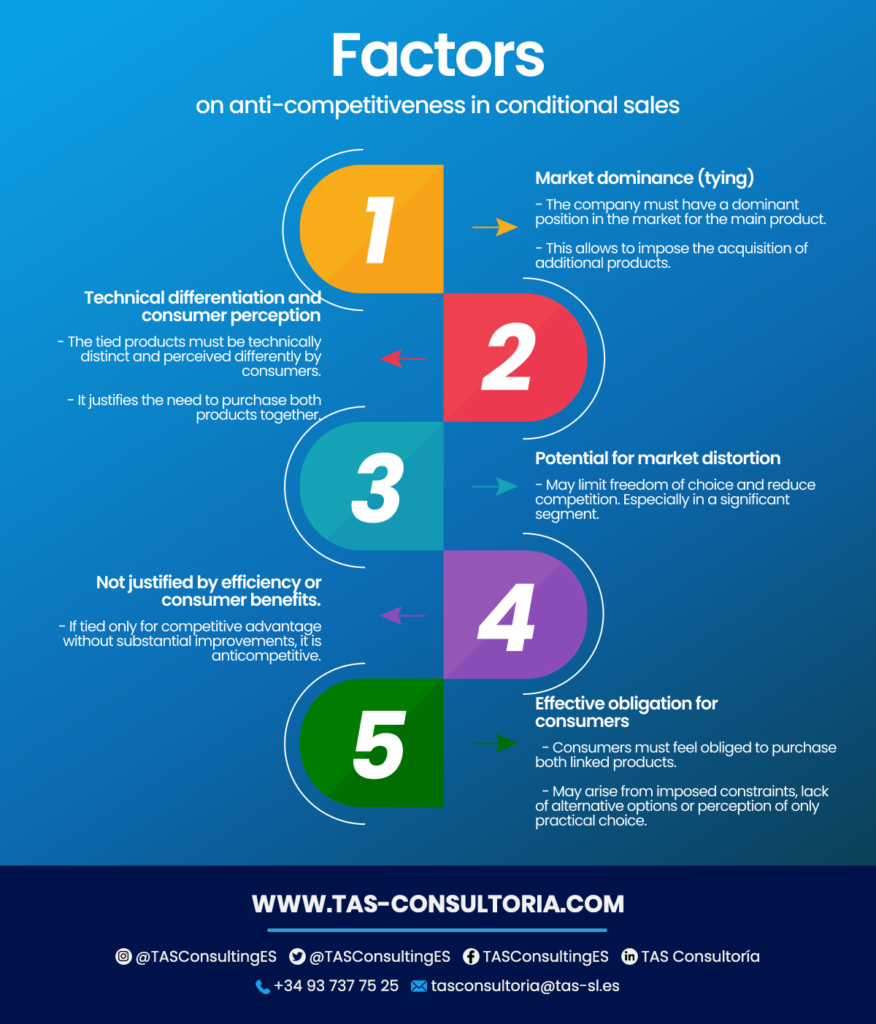
Buying and selling is a very common economic activity in Spain and all over the world. But sometimes the parties involved wish to introduce special conditions in their commercial agreements. This is to ensure that certain requirements are met before the transaction is finalized. This is what we know as “conditional sale and purchase”. Explore with us how this strategy works and what aspects you should take into account when entering into such agreements. Read on!
What are conditional sales?
Conditional buying and selling is based on joining products or services that complement each other to enhance the customer’s experience. This is done to ensure quality and proper use. For example, when buying a phone, also offer accessories to improve its performance. This benefits both the customer and the business.
Let’s take another example: imagine you buy a printer and you are also offered to buy their special inks. The company may say that these inks improve performance and print quality. Therefore, they suggest that you purchase them together with the printer; thus, a related sale and purchase is established that benefits both parties.
A similar scenario arises in the telecommunications field. A company with a dominant presence in the Internet services market may opt for this strategy. One idea would be to ask consumers to sign up for its fixed telephony service as well.
Conditional purchase and sale can be supported by the idea of offering a complete communications solution. Ensuring greater integration and consistency in the services provided.
These examples highlight how conditional sales can be based on the idea of providing a harmonized set of products or services. Provided that, from the supplier’s perspective, they complement each other and provide synergistic benefits to consumers.
However, it is essential to consider how these strategies can influence competition. Also, on consumer choice to ensure an appropriate balance. Whether between commercial interests and consumer protection and competition.
You may also be interested in: How to establish a branch in Spain?
Conditional sale and purchase and its impact on competition
Through the tie-in strategy, a supplier may try to leverage its position in one industry. But, to gain an advantage in another market with greater competition.
Take the telecommunications case mentioned above. A company that has the largest share of the Internet market may force its customers to purchase fixed telephony service as well. Specifically to expand its share in that market segment.
In addition, through conditional buying and selling, a company can reduce the number of potential consumers for its competitors. This can lead to other companies leaving the market and establish barriers to entry for new companies.
In short, this would not only lead to the exit of companies from the market in question. It would also discourage the entry of new companies. This would result in less competition, harming consumers by giving them fewer options to choose from.
You may also be interested in: Corporate relationships in Spain: which one should I choose?
What determines the anticompetitive nature of the conditional sale and purchase?
An important question is: what conditions must be met for this type of practice to be identified as potentially harmful to competition? For tied sales to be considered as potentially anticompetitive, a number of essential conditions must be met:

Dominance in the market of the main product (tying)
The company employing the tie-in buying and selling strategy must have a dominant position in the market for the main product. This dominant position gives the company significant control over purchasing conditions and allows it to impose the purchase of additional products.
Technical differentiation and consumer perception
Linked products must be technically distinct and perceived differently by consumers. This differentiation is fundamental, as it justifies the need to purchase both products together.
Potential for market distortion
The tied buying and selling strategy must have a high probability of distorting the market. Especially when it affects a significant segment of the market. This distortion may arise due to the imposition of an additional product, limiting freedom of choice and reducing competition.
Absence of efficiency justification
The tie-in strategy should not be justified on efficiency or consumer benefit grounds. If product tying is implemented solely to gain competitive advantages without offering substantial improvements for consumers: it is therefore an anti-competitive business measure.
Effective obligation for consumers
Consumers should feel effectively obligated to purchase both linked products. This obligation may arise through limitations imposed by the company.
A conditional sale contract must feel like virtually the only attractive option. Also due to lack of viable alternative options or the perception that joint acquisition is the only practical option.
These conditions highlight the need to carefully evaluate conditional sales practices. This is necessary to ensure that they do not harm competition in the market and protect the interests of consumers.
You may also be interested in: What are Temporary Joint Ventures?
An in-depth understanding of conditional sales and purchases is key to optimizing your commercial transactions and guaranteeing solid agreements. If you want to continue exploring effective strategies in sales and entrepreneurship, we invite you to subscribe to our library.
Get exclusive access to detailed and up-to-date information that will help you hone your business skills. Don’t miss out on the latest news and join our community!




Your email address will not be published .
Required fields are marked with *